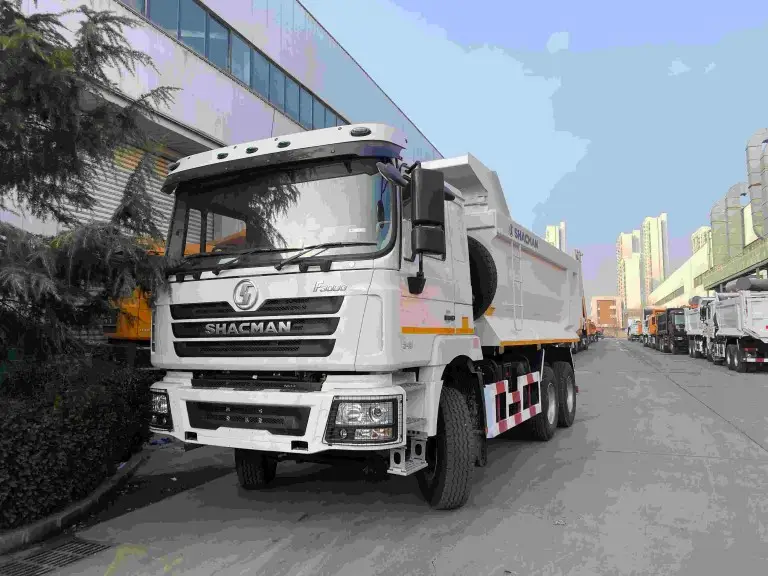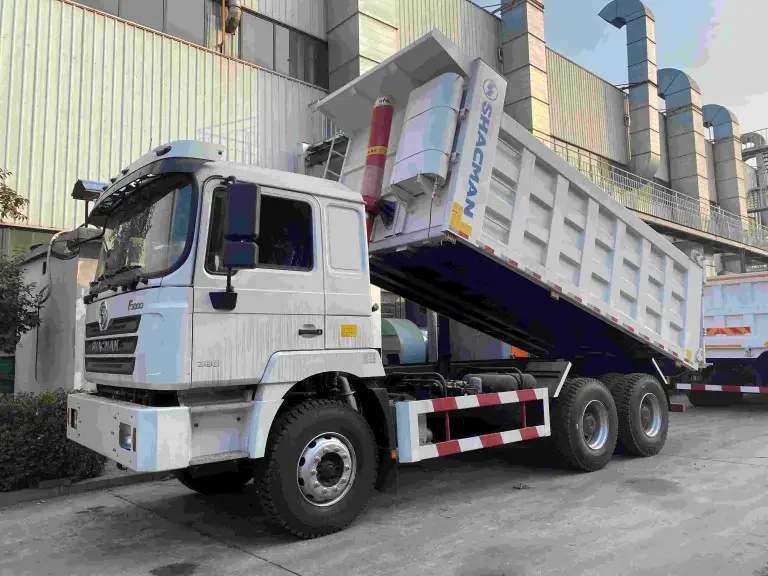HOWO Special Truck Ltd is honored to represent a renowned brand in the heavy-duty truck market, celebrated for its fuel efficiency and performance. With over 50 years of manufacturing experience, Shacman continues to innovate in truck technology. Fuel efficiency is a key factor in operational costs for fleet operators and independent drivers. In our previous article, we discussed how the fuel efficiency of Shacman tractor trucks performs. This article, based on industry data and test reports, explores the fuel efficiency, technological innovations, and design features of Shacman’s various series to help you make an informed decision.
Table of Contents
Understanding Fuel Efficiency in Heavy-Duty Trucks
At HOWO Special Truck Ltd, we understand that fuel efficiency is crucial for heavy-duty truck operators, as it directly impacts operational costs and environmental sustainability—especially in the logistics and transportation industries where heavy trucks consume large amounts of diesel.
Key Factors Affecting Truck Fuel Consumption
We recognize that multiple factors influence truck fuel consumption, including engine design, vehicle weight, aerodynamics, driving conditions, load weight, and maintenance practices.
For example, terrain has a significant impact on fuel usage: driving on flat highways versus mountainous routes can result in differences of up to 15-20%. Properly maintained trucks—with optimized tire pressure, clean air filters, and regular engine servicing—can achieve 5-10% better fuel efficiency compared to poorly maintained vehicles.
| Key Factors | Impact Description | Example Improvements |
|---|---|---|
| Engine Design | Determines fuel combustion efficiency | Adopting turbocharging can boost efficiency by 15% |
| Aerodynamics | Reduces wind resistance at high speeds | Optimized designs can lower consumption by 10-15% |
| Driving Conditions | Affected by terrain and weather | Flat roads vs. mountains: differences of 15-20% |
(Note: These data are based on industry averages; actual results depend on the specific model.)
Why Fuel Efficiency Matters for Fleet Operators
As experts in the field, we know that for fleet operators, even small improvements in fuel efficiency can lead to substantial savings.
For instance, improving efficiency by just 0.5 yuan per kilometer can save tens of thousands of yuan annually for an entire fleet.
Beyond economic benefits, fuel efficiency has environmental significance: reducing fuel consumption by 1% in a heavy-duty truck fleet can lower carbon dioxide emissions by approximately 100 tons per year.
We recommend using online fuel savings calculators (based on load and mileage) to evaluate potential benefits.
What is the Fuel Efficiency of a Shacman Truck?
At HOWO Special Truck Ltd, we frequently receive inquiries about Shacman trucks’ fuel efficiency, as our customers seek ways to reduce costs and boost profitability.
Average Fuel Consumption Rates
We’ve found that the Shacman X3000 series achieves a fuel consumption of approximately 18-30 liters/100km under normal conditions, depending on load and terrain. For example, during unloaded highway driving, it can reach 18-22 liters/100km; in heavy-loaded mountainous areas, it may rise to 28-30 liters/100km. Compared to other brands, Shacman performs competitively, though actual results depend on maintenance.
Comparing Shacman’s Efficiency to Industry Standards
In our comparisons with industry standards, the Shacman X3000 series fuel consumption of about 18-30 liters/100km holds up well against competitors: Volvo FH16 at around 21-40 liters/100km, MAN TGX at 25-35 liters/100km, and Scania R series at 23-25 liters/100km. Customer reports indicate that switching to Shacman can yield 5-10% fuel savings.
Technological Innovations Driving Shacman's Fuel Economy
We at HOWO Special Truck Ltd are excited about how Shacman trucks leverage technological advancements to enhance fuel efficiency, particularly in the X3000 and F3000 series.
Advanced Engine Technology: We equip Shacman trucks with Cummins engines, renowned for their fuel efficiency and reliability. These engines incorporate turbocharging and intercooling technologies to improve power and efficiency.
| Engine Model | Efficiency Improvement | Key Technology |
|---|---|---|
| Cummins Engine | Up to 10-15% | Turbocharging and Intercooling |
| Euro V Engine | Significant emission reduction | Advanced fuel injection systems |
Aerodynamic Design Features: The streamlined designs of our X3000 and F3000 series reduce wind resistance. Through CFD optimization, the X3000 cab’s drag coefficient is lowered to 0.53, representing about a 15% reduction compared to traditional designs.
Transmission and Drivetrain Optimization: Our Shacman trucks feature direct-connected transmission systems and high-efficiency drive axles that minimize energy loss, boosting fuel efficiency. We suggest regular transmission checks to maintain optimal performance.
Shacman Truck Models and Their Fuel Efficiency Profiles
As your China truck trusted dealer, we at HOWO Special Truck Ltd offer a variety of Shacman models, such as the F3000 and X3000 series, designed for different operational needs with a focus on performance and fuel economy.
F3000 Series Fuel Performance
The F3000 series serves as a workhorse in our lineup, combining robust construction with high-performance engines that deliver excellent torque while outperforming many competitors in fuel consumption. Its aerodynamic design significantly reduces drag on highways. Typical consumption: 20-35 liters/100km.
X3000 Series Fuel Performance
The X3000 series is our premium offering, featuring Cummins engines ranging from 280-500 horsepower that balance power and efficiency across various conditions. Both series comply with Euro V emission standards, incorporating advanced fuel injection and engine management technologies. Customers in mountainous regions prefer the F3000 for its load efficiency, while long-haul operators favor the X3000 for its superior aerodynamics. (Suggestion: Choose the model that matches your routes to maximize efficiency.)
Maximizing Your Shacman Truck's Fuel Economy
HOWO Special Truck Ltd believe these vehicles provide a compelling solution for your business needs. By integrating advanced engine technology, aerodynamic design, and robust transmissions, Shacman trucks lay a strong foundation for efficiency. Combining this with regular maintenance, smooth driving habits, and proper tire care can further enhance performance. Best practices include monitoring tire pressure, avoiding rapid acceleration, and using low-rolling-resistance tires.
FAQ
How does the Shacman F3000 series compare to other heavy-duty trucks in terms of fuel efficiency?
At HOWO Special Truck Ltd, we’ve seen that the F3000 series features advanced engine technology and aerodynamic designs, making it competitive under various conditions with optimized consumption rates of 20-35 liters/100km, comparable to similar models. This positions it well for cost-sensitive operations, often outperforming competitors in fuel economy for rugged applications.
What role does the transmission play in the fuel efficiency of Shacman trucks?
We understand that optimized transmissions, such as advanced gear ratios, help reduce consumption under heavy loads or challenging conditions, potentially saving 5-10%. In Shacman trucks, this ensures smooth power transfer and minimizes energy loss, contributing to overall efficiency.
Can the fuel efficiency of a Shacman truck be improved through maintenance?
Yes, regular checks on tire pressure, oil changes, and filter replacements can significantly boost efficiency, with improvements up to 5-10%. At HOWO Special Truck Ltd, we emphasize preventive maintenance to keep your Shacman running at peak performance.
How do driving conditions affect the fuel efficiency of Shacman trucks?
Terrain, weather, and traffic have a major impact: mountains or congestion can increase consumption, while flat roads maintain optimal rates (18-25 liters/100km). Adverse weather like cold temperatures can raise aerodynamic drag by 2% per 10°F drop, reducing efficiency by about 1%. We advise adapting driving habits to these conditions for better results.
Are there any additional features in Shacman trucks that help reduce fuel consumption?
Yes, features like fuel injection systems, aerodynamic elements, and low-rolling-resistance tires all contribute to lower costs. In our Shacman lineup, elements such as efficient drive axles and optimized powertrains can reduce fuel use by up to 4% through technical upgrades.
How does the choice of engine affect the fuel efficiency of a Shacman truck?
Different engine options, such as efficient Cummins variants, can reduce consumption, especially for specific fleet needs, with savings up to 10%. Cummins engines in Shacman trucks offer superior fuel economy through advanced technologies, potentially lowering comprehensive fuel use by 15-20%.






